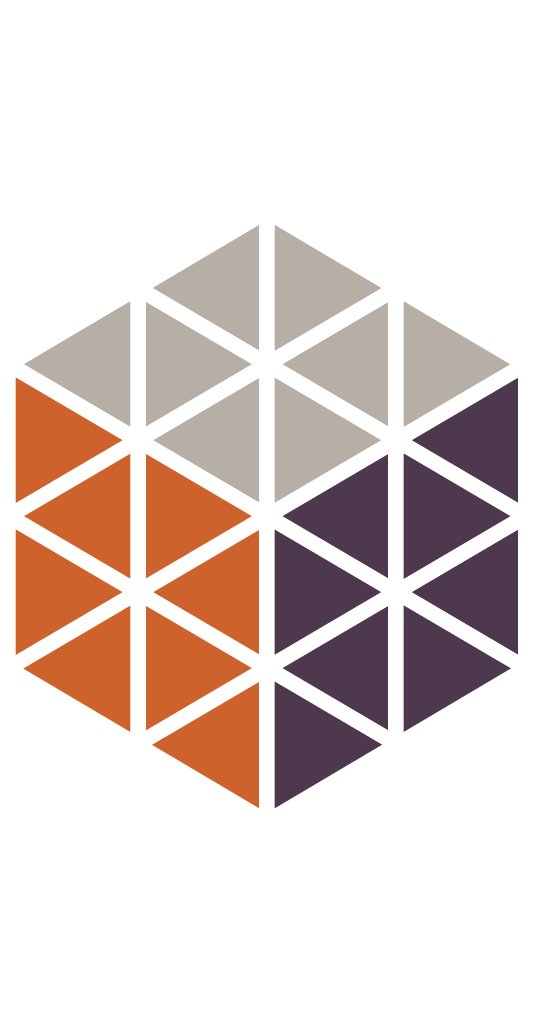People make methamphetamine with a variety of over-the-counter medicines, acids and household cleaning products. When these materials are combined, it can create noxious chemical vapors and fatal explosions. People with a meth addiction may resort to making the drug in small batches or in illegal drug labs.
Many of the flammable ingredients used to produce meth can cause large explosions when improperly mixed. Even when explosions or fires do not occur, the toxic chemicals released into the air during meth production pose numerous health risks, including dizziness, disorientation and organ damage.
The most popular primary ingredients used in making methamphetamine are pseudoephedrine and ephedrine, which are commonly found in cold medicine. When cooked, these ingredients chemically change into meth.
Pseudoephedrine
Pseudoephedrine is the active stimulant found in the over-the-counter medication Sudafed. It is used to treat nasal or sinus congestion caused by sinusitis, the common cold or respiratory allergies. The ingredient can also alleviate ear congestion resulting from ear infection or inflammation.
The stimulant can irritate the skin and eyes, requiring medical attention. Ingesting doses greater than 240 milligrams can lead to anxiety, dizziness and hypertension. When heated, pseudoephedrine is flammable. This increases the risk for fires when it is used to cook methamphetamine.
In an effort to curb illegal meth production, a law was passed in 2006 that required a prescription to purchase Sudafed. Afterward, an updated version of Sudafed that did not include pseudoephedrine, called Sudafed PE, was created. This version cannot be converted to meth and can be purchased without a prescription.
Ephedrine
Ephedrine is a decongestant that improves breathing by clearing nasal passages. Ephedrine and pseudoephedrine have actions and side effects similar to the natural hormone adrenaline.
The decongestant has stimulant properties. This means that it can raise blood pressure and heart rate, which can lead to numerous health complications. According to Columbia University, the drug can also cause chest pain, stroke, seizures, heart attack or psychosis.
- Anhydrous ammonia
- Anhydrous ammonia is a colorless gas often used as a fertilizer and refrigerant. Exposure to the gas can cause chest pain and irritate the eyes, nose and throat. It can also deprive you of oxygen and cause excess fluid buildup in the lungs.
- Paint thinner
- Used to thin oil-based paints, this solvent can cause chemical burns on the skin.
- Red phosphorus
- Red phosphorus is a highly flammable substance used on matchboxes, in fireworks and in other explosives. It can ignite when heated above 260 degrees Celsius and may explode from contact or friction.
- Drain cleaner
- The dangerous chemicals in drain cleaner can cause severe abdominal pain, tissue damage and bloody vomiting. The product is harmful when swallowed or inhaled.
- Battery acid
- Battery acid, or sulfuric acid, can cause severe burns and speech problems when swallowed. It can also result in dizziness, body weakness and heavy coughing when inhaled.
- Freon
- A tasteless and odorless gas, Freon is a refrigerant that can cut off oxygen to the cells and lungs. Exposure to the gas can lead to organ damage, cardiac arrest or sudden death.
- Acetone
- Acetone is an extremely flammable ingredient that is found in nail polish remover. Ingesting this solvent can result in drowsiness, irritation, unconsciousness or coma.
- Iodine crystals
- Iodine can increase the combustion of other substances and cause fires. It can also cause coughing, wheezing, diarrhea, abdominal pain and redness of the skin and eyes. When ingested, the crystals can lead to serious internal damage.
- Lithium
- Lithium is a soft metal that reacts violently with water. The metal can burn all body tissues and cause stomach pain, seizures and coma. Reports have found that lithium-ion batteries can burst into flame or explode.
- The oxidation process that occurs during meth production also produces foul odors. The ingredients used in meth labs often create a strong chemical smell during meth production.
“Shake and Bake” Meth
Since the original formulation of Sudafed was removed from pharmacy shelves, meth users have found new ways to make the drug. Many resort to the shake and bake method, which involves mixing household chemicals, a small amount of pills and pseudoephedrine in an empty soda bottle.
No flame is required. The chemical reaction produces a small amount of crystalline powder that can be smoked, snorted or injected.
The process is just as dangerous as making meth in sophisticated labs. When shaking the ingredients in a bottle, pressure builds. The pressure can cause the bottle to burst, filling the air with toxins. Lithium in the air can cause explosions or fires.
If any oxygen enters the bottle, or if the cap is loose when shaken, the entire bottle can catch on fire.
Signs of a Meth Lab
Meth is often made in crude laboratories filled with unsophisticated equipment. According to the U.S. Department of Justice, many people who use these labs have no training in chemistry.
The two common types of meth labs are superlabs and small toxic labs. Superlabs produce large amounts of methamphetamine, usually to supply drug trafficking groups. These groups sell the drug throughout the United States.
Conversely, small toxic labs produce limited amounts of meth. But small operations can still cause fires and explosions. They are often found in rural parks, houses, motel rooms or inside motor vehicles.
- Unusual odors in the air, such as ether, ammonia or chemical smells
- Evidence of chemical waste
- Frequent visitors at unusual times
- Curtains routinely drawn
- Windows covered with aluminum foil
- Excessive amounts of trash, including coffee filters or empty soda bottles coated with residue
To combat the production of meth, U.S. laws require retail stores and pharmacies to monitor purchase records of products containing pseudoephedrine. By law, individuals can only purchase a limited amount of these products in a single day.
Cooking meth is typically a simple process, but it can be dangerous. The combination of ingredients used to make methamphetamine produces toxic fumes, fires or explosions that can compromise a person’s safety.
Medical Disclaimer: DrugRehab.com aims to improve the quality of life for people struggling with a substance use or mental health disorder with fact-based content about the nature of behavioral health conditions, treatment options and their related outcomes. We publish material that is researched, cited, edited and reviewed by licensed medical professionals. The information we provide is not intended to be a substitute for professional medical advice, diagnosis or treatment. It should not be used in place of the advice of your physician or other qualified healthcare provider.
Author
Content Writer,
DrugRehab.com
Matt Gonzales is a writer and researcher for DrugRehab.com. He graduated with a degree in journalism from East Carolina University and began his professional writing career in 2011. Matt covers the latest drug trends and shares inspirational stories of people who have overcome addiction. Certified by the Centers for Disease Control and Prevention in health literacy, Matt leverages his experience in addiction research to provide hope to those struggling with substance use disorders.
View Sources
- Angelo State University. (n.d.). Burning Phosphorus. Retrieved from https://www.angelo.edu/faculty/kboudrea/demos/burning_phosphorus/burning_phosphorus.htm
- The Associated Press. (2009, August 25). New 'shake-and-bake' method for making crystal meth gets around drug laws but is no less dangerous. Retrieved from http://www.nydailynews.com/life-style/health/new-shake-and-bake-method-making-crystal-meth-drug-laws-no-dangerous-article-1.397428
- Centers for Disease Control and Prevention. (2017, September 15). Anhydrous Ammonia. Retrieved from https://www.cdc.gov/healthcommunication/toolstemplates/entertainmented/tips/AnhydrousAmmonia.html
- Centers for Disease Control and Prevention. (2015, July 22). Iodine. Retrieved from https://www.cdc.gov/niosh/ipcsneng/neng0167.html
- Columbia University. (2015, June 17). Ephedrine (ma huang) — Uses and dangers? Retrieved from http://goaskalice.columbia.edu/answered-questions/ephedrine-ma-huang-%E2%80%94-uses-and-dangers
- Drugs.com. (2018, March 1). Overview. Retrieved from https://www.drugs.com/ephedrine.html
- Food and Drug Administration. (2017, November 24). Legal Requirements for the Sale and Purchase of Drug Products Containing Pseudoephedrine, Ephedrine, and Phenylpropanolamine. Retrieved from https://www.fda.gov/Drugs/DrugSafety/InformationbyDrugClass/ucm072423.htm
- Healthline. (2015, November 30). Refrigerant Poisoning. Retrieved from https://www.healthline.com/health/refrigerant-poisoning
- Mayo Clinic. (2018, February 8). Chemical burns: First aid. Retrieved from #
- Mayo Clinic. (2017, March 1). Description and Brand Names. Retrieved from #
- National Institute on Drug Abuse. (2017, February). Methamphetamine. Retrieved from https://www.drugabuse.gov/publications/drugfacts/methamphetamine
- Spectrum Chemical Mfg. Corp. (2013, July 25). Pseudoephedrine hydrochloride. Retrieved from https://www.spectrumchemical.com/MSDS/P4820.PDF
- University of Michigan. (2011, August 17). Ephedrine and Pseudoephedrine. Retrieved from https://www.uofmhealth.org/health-library/hn-1371006
- U.S. Department of Justice. (n.d.). Meth Awareness. Retrieved from https://www.justice.gov/archive/olp/methawareness/
- U.S. Department of Justice. (n.d.). Methamphetamine Laboratory Identification and Hazards Fast Facts. Retrieved from https://www.justice.gov/archive/ndic/pubs7/7341/7341p.pdf
- U.S. National Library of Medicine. (2017, January 31). Drain cleaner poisoning. Retrieved from https://medlineplus.gov/ency/article/002779.htm
- U.S. National Library of Medicine. (2015, October 13). Lithium toxicity. Retrieved from https://medlineplus.gov/ency/article/002667.htm
- U.S. National Library of Medicine. (2016, June 22). Sulfuric acid poisoning. Retrieved from https://medlineplus.gov/ency/article/002492.htm
- Weise, E. (2016, September 2). Why lithium-ion batteries go up in flames. Retrieved from https://www.usatoday.com/story/tech/news/2016/09/02/samsung-battery-lithium-ion-fire-burning-explosion/89782856/
- West Virginia Department of Environmental Protection. (n.d.). One-Pot Methamphetamine Cooks Pose New Danger. Retrieved from https://dep.wv.gov/environmental-advocate/reap/ppod/Documents/Shake%20and%20Bake%20Method.pdf
 Addiction
Addiction
 Treatment
Treatment
 Faith & Religion
Faith & Religion
 Active Recovery
Active Recovery
 Our Community
Our Community



